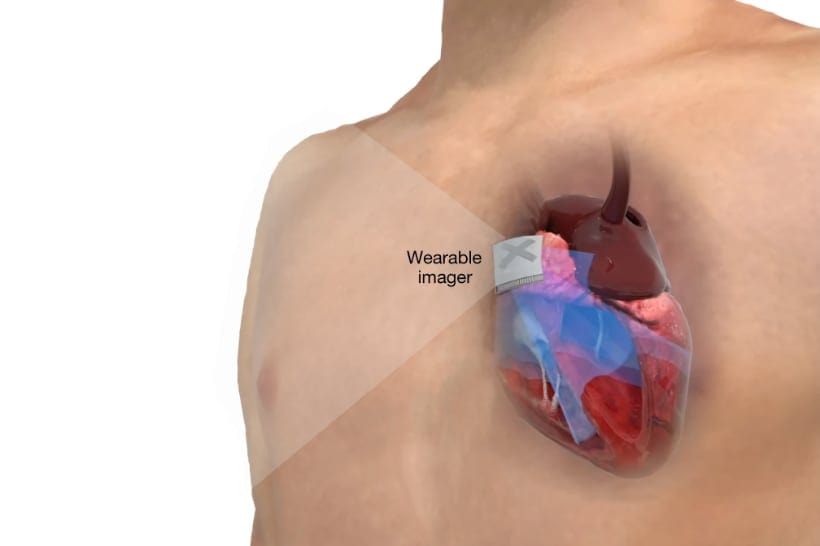By Dr Jonathan Shurlock
A recent research briefing in Nature has described a ‘wearable ultrasonic device’, around the size of a postage stamp. The authors describe their device and its intended role in continuous imaging of cardiac function. They propose that the designed device overcomes the issue of bulky machines preventing continuous monitoring and the current limitations of other wearable cardiac devices (i.e. limited to signals on skin).
See the full report here for the technical details of the device. In brief, the device is suggested to eliminate the need for a rotational ultrasound probe to provide standard views and measurements through the use of orthogonally configured electrodes and piezoelectric composite.
The authors’ group compared the performance of their wearable device with a commercially available device in the 4 standard echocardiography views. Comparative images in each view are displayed in the full paper, and the differences described as ‘negligible’ though this is not quantified or rationalised.
A further potential novel benefit of this device described by the group is its role in monitoring during motion, as a form of stress echocardiography. It is suggested that the device can collect data during exercise in order to provide real-time insights into stress induced pathology. In order to support this claim the authors attempted continuous monitoring of left ventricular activity before, during, and post-exercise. They described how movements during activity impacted on specific measurements including left ventricular internal diameter at the end of both systole and diastole.
Echocardiography is central to the diagnosis and management of cardiac disease, and exploring new techniques to improve patient care and outcome are welcome. Such emerging technologies should be considered cautiously with a focus on the evidence base for a proven benefit to patients and, in the absence of this, a consideration for the potential benefits and how these can be effectively interrogated. We look forward to seeing further data around this interesting and novel technology.

